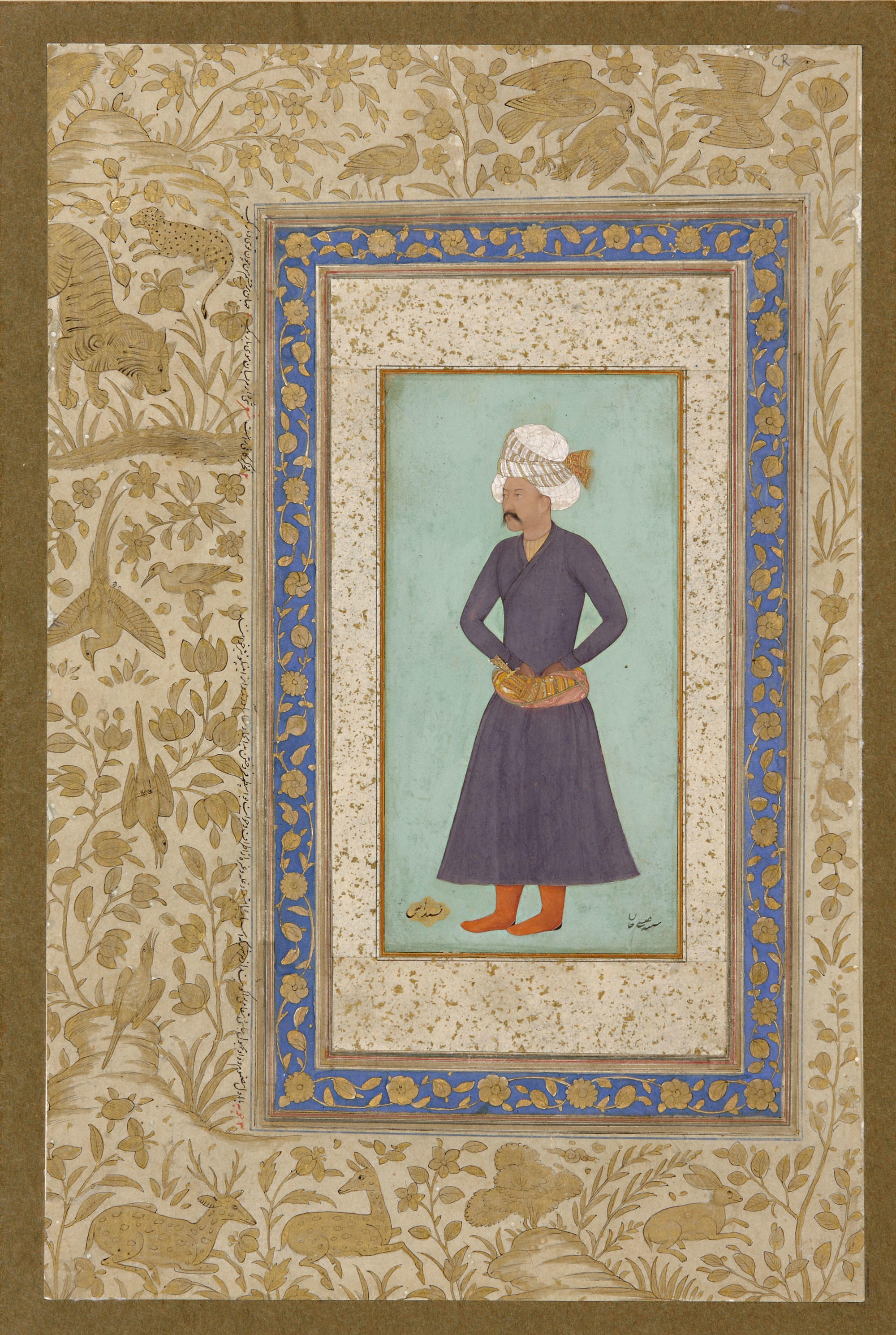Click on the image to zoom
Portrait of Isa Khan, Qurchibashi of Shah 'Abbas I
- Accession Number:AKM153
- Place:Agra, India
- Dimensions:36.9 x 24.7 cm
- Date:1618
- Materials and Technique:Opaque watercolour, gold, paper
Safavid Iran had much contact with its Indian neighbours to the east, the Mughals, and its artistic legacy, passed down from the Timurids, often served as a source of inspiration for Mughal art and architecture. In fact, the second Mughal emperor, Humayun (r. 1530-40 CE and 1555-56 CE), spent considerable time at the Safavid court after the Afghan sultan conquered his Indian territories. The Safavid Shah Tahmasp (r. 1524-76 CE) welcomed the exiled ruler and helped him reclaim the Mughal throne a few years later. Diplomatic relations continued between Iran and India during the reign of Shah 'Abbas I (r. 1587-1629 CE), the high point of Safavid power. This portrait, once identified as representing Shah 'Abbas I, is ascribed at the lower left to Bishn Das (“Bishndas”), a Mughal portraitist favoured at the court of Jahangir (r. 1605-27 CE). As foreign embassies often travelled with their own artists, it is possible that Bishndas accompanied the envoy of the Mughal Khan 'Alam, stationed in Iran from 1618-19 CE (Canby 1998, p. 139). In the late twentieth century, scholars suggested that the figure in the painting was 'Isa Khan (d. 1632 CE), the qurchibashi, or commander-in-chief, of the king’s royal guard. The justification behind this identification comes from a reading of the Persian inscription at the lower right of the painting as “shabih-i 'Isa Khan” (the likeness of 'Isa Khan). Appointed as qurchibashi in 1612-13 CE, 'Isa Khan is mentioned by Iskandar Beg Munshi in the latter’s history of Shah 'Abbas. His prominent status is underscored by the fact that the king’s successor, Shah Safi' (r. 1629-42 CE), had 'Isa Khan executed three years after he ascended the throne (Eskander Beg Monshi 1978, vol. 2, p. 1309; Canby 1998, p. 140). It would therefore not seem unusual for Bishndas to record the likeness of a pre-eminent courtier as one of the portraits painted on his visit. On the other hand, however, the inscription appears more clearly legible as “shabih-i 'Ali Khan”, which encourages further research on the identity behind this name as well.
References
Sheila R. Canby, Princes, Poets and Paladins: Islamic and Indian paintings from the collection of Prince and Princess Sadruddin Aga Khan, London, 1998. ISBN: 9780714114835
Eskandar Beg Monshi, History of Shah ‛Abbas the Great, 2 vols., trans. R. M. Savory. Boulder, CO, 1978. ISBN: 9780891582960
Note: This online resource is reviewed and updated on an ongoing basis. We are committed to improving this information and will revise and update knowledge about this object as it becomes available.


